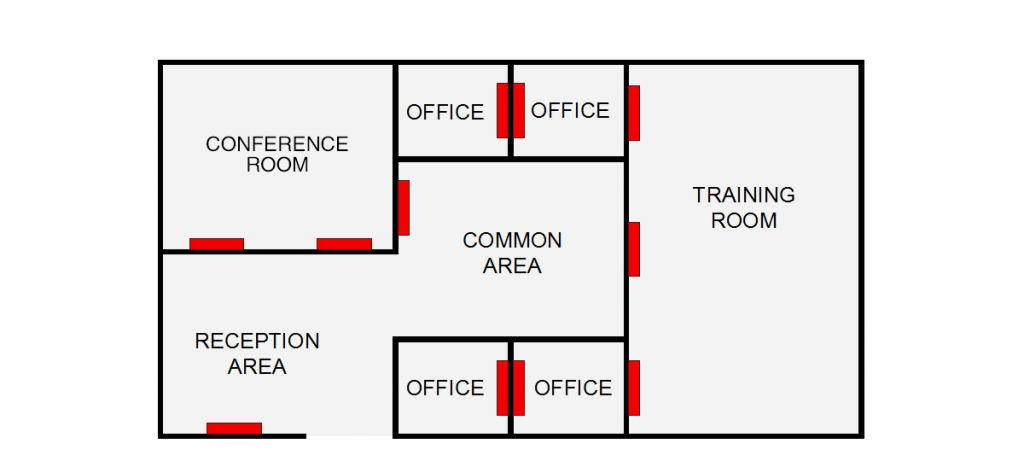Zones are the individual spaces in any home, office or building, each with it’s own heating and cooling source. Determining how your spaces should be divided for cooling and heating allows you to better control the temperature in each area or “zone”.
Most homes, offices or buildings don’t get the same amount of sun or shade throughout the day, so they require different amounts of cooling or heating throughout the day. Due to usage, equipment, people traffic and other factors, one zone may require more heating or cooling than another.
An HVAC zoned system control the temperature for each area, or “zone” in a home, office or building rather than attempting to heat or cool all of the rooms or spaces to the same temperature at the same time (like a conventional ducted system).
With a multi-zone system, like many YMGI systems, you can set different temperatures for each individual room or zones. With a multi-zone system, you can heat or cool spaces as needed or provide minimal heating or cooling to those areas when not in use. This helps reduce energy use and saves you money because you are only heating or cooling in spaces when needed.
Consider this example:
You have an office building that has a large conference room (20 feet x 25 feet), 4 individual offices (10 feet x 12 feet), a reception area (15 feet x 15 feet), common area and a large training room (25 feet x 40) feet. You might conclude that because there are 7 rooms that there are 7 zones. In fact, there are 8 zones, because the common area should be calculated as a separate zone. That does not necessarily mean each room only needs one Indoor Unit per zone. Larger rooms, or rooms that have larger thermal loads may require multiple Indoor Units to properly and efficiently condition the zone.
Every office building has unique thermal loads associated with its location and use. Due to the complexities and number of variables involved, you should always have an HVAC professional calculate the thermal loads and losses for a building, to ensure the installed HVAC equipment is correctly sized. This will ensure that your comfort level in each zone is adequately maintained.
Consider:
The training room is large enough to accommodate several people, computers, lights and training equipment. It also has a large thermal solar load due to the number of windows that face sunward. These conditions indicate that this room may require up to 3 separate indoor units to condition the space. These 3 indoor units can still be controlled individually for when the thermal loads are higher or lower. YMGI systems have these features built-in to allow you complete control for each Indoor Unit and zone.
Examining other rooms in this floor plan we notice that the Conference room is large, with high ceilings, has several windows located on 2 walls which allow sun light into the room most of the day and can host many people, computers and other items contributing to this room’s thermal loads. The 4 offices are located where they receive less sun. The reception area is in an area of the building where it receives very little sun.
Each room in this building has a unique solar load that must be considered along with other environmental issues both internal and external. The number of people and equipment must also be considered when determining the complete thermal load on each room and the overall building.
A trained and qualified HVAC professional performing these calculations can take all of these variables (and more) into account. After performing accurate calculations your HVAC professional can correctly select properly sized YMGI equipment and the optimal location for conditioning each zone.

